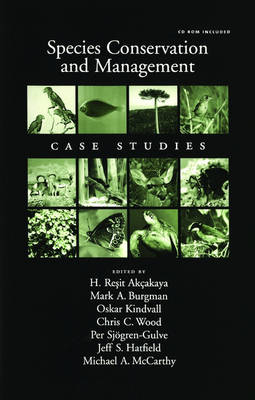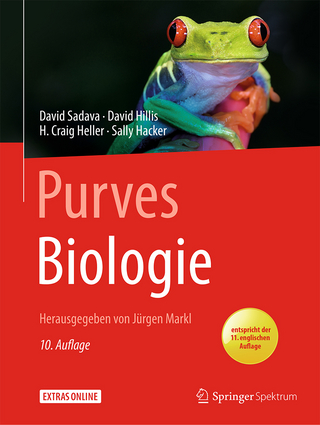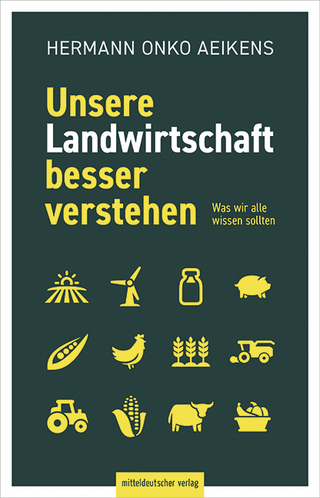
Species Conservation and Management
Oxford University Press Inc (Verlag)
978-0-19-516646-0 (ISBN)
- Titel ist leider vergriffen;
keine Neuauflage - Artikel merken
This edited volume is a collection of population and metapopulation models for a wide variety of species, including plants, invertebrates, fishes, amphibians, reptiles, birds, and mammals. Each chapter of the book describes the application of RAMAS GIS 4.0 to one species, with the aim of demonstrating how various life history characteristics of the species are incorporated into the model, and how the results of the model has been or can be used in conservation and management of the species. The book comes with a CD that includes a demo version of the program, and the data files for each species.
1. Introduction; SECTION I. PLANTS; 2. Strategies for Plant Population Viability Modeling; 3. Using Population Viability Analysis for Management of an Endangered Australian Shrub, Grevillea caleyi; 4. Whitebark Pine Pinus albicaulis in Mt. Rainier National Park, Washington, USA; 5. The Monkey Puzzle Tree in Southern Chile; 6. Banksia goodii in Western Australia Martin Drechsler; 7. Erodium paularense in Spain: relevance of microhabitats in population; 8. Population viability analysis of the endangered Australian heath shrub, Epacris barbata, subject to recurring fires and disease epidemics; SECTION II. INVERTEBRATES; 9. Modelling invertebrates: an overview; 10. A carnivorous land snail Tasmaphena lamproides in Tasmania; 11. Bush cricket Metrioptera bicolor in Sweden; 12. Evaluating habitat management and translocation alternatives for the Puritan Tiger Beetle; 13. Giant Velvet Worm Tasmanipatus barretti (Onychophora) in Tasmania, Australia; 14. The occupancy pattern of a saproxylic beetle, Osmoderma eremita, in a fragmented landscape predicted from a RAMAS metapopulation model; 15. Woodland Brown Butterfly Lopinga achine in Sweden; 16. Transmission dynamics of the parasite Echinococcus multilocularis in a patchy environment; SECTION III. FISHES; 17. Introduction; 18. Population dynamics of the European Mudminnow in the Austrian floodplain of the River Danube: Empirical and modeling studies as a basis for species conservation; 19. How many populations are needed for persistence of listed salmon species? Prioritising rehabilitation efforts for the endangered trout cod in the Murray River, southeast Australia using RAMAS Metapop; 20. Metapopulation Analysis of Yellowtail Flounder off the Northeastern United States; 21. Simulating the dynamics of an Atlantic herring population complex under several harvest regimes; 22. A generic framework for evaluating conservation limits and harvest strategies in fisheries management for Pacific Herring; SECTION IV. AMPHIBIANS AND REPTILES; 23. Modeling amphibians and reptiles: an overview; 24. Population viability analysis of great crested newts (Triturus cristatus): the effects of metapopulation structure and juvenile dispersal; 25. Houston toad Bufo houstonensis in Bastrop County, Texas; 26. Edge effects and population viability of eastern indigo snakes; 27. Fire management for the Frill-necked Lizard Chlamydosaurus kingii in northern Australia; 28. Modelling juvenile reintroduction and spatial management strategies for metapopulation establishment of the sand lizard (Lacerta agilis); 29. Exploring the metapopulation dynamics of the southern Great Barrier Reef green sea turtle stock and the possible consequences of sex biased local harvesting; SECTION V. BIRDS; 30. Modeling Birds: An Overview; 31. Conservation and management of the yellow-shouldered parrot (Amazona barbadensis) on the islands of Margarita and La Blanquilla, Venezuela; 32. Golden-cheeked Warbler Dendroica chrysoparia in Central Texas; 33. Capercaillie Tetrao urogallus in western Switzerland; 34. Projected Effects Of Sea-Level Rise On The Population Viability Of Seaside Sparrows (Ammodramus maritimus); 35. Assessing options for establishing a new wild population of the helmeted honeyeater (Lichenostomus melanops cassidix); 36. Wandering Albatross Metapopulation in the Southern Oceans; SECTION VI. MAMMALS; 37. Mammal Population Viability Modelling; 38. Snowshoe Hares in a dynamic, managed landscape; 39. Conservation of Florida Key Deer; 40. Harvesting of Turkish Mouflon Ovis gmelinii anatolica in Central Anatolia; 41. Sindh Ibex in Kirthar National Park, Pakistan; 42. Biological uncertainty and extinction risk for Steller sea Lions (Eumetopias jubatus); 43. Using Models to Guide Recovery Efforts for the Florida Panther; Appendix: Using RAMAS GIS
| Erscheint lt. Verlag | 28.10.2004 |
|---|---|
| Co-Autor | Mark A. Burgman, Oskar Kindvall, Chris C. Wood, Per Sjogren-Gulve |
| Zusatzinfo | numerous halftones; figures & tables |
| Verlagsort | New York |
| Sprache | englisch |
| Themenwelt | Naturwissenschaften ► Biologie |
| ISBN-10 | 0-19-516646-9 / 0195166469 |
| ISBN-13 | 978-0-19-516646-0 / 9780195166460 |
| Zustand | Neuware |
| Haben Sie eine Frage zum Produkt? |
aus dem Bereich


